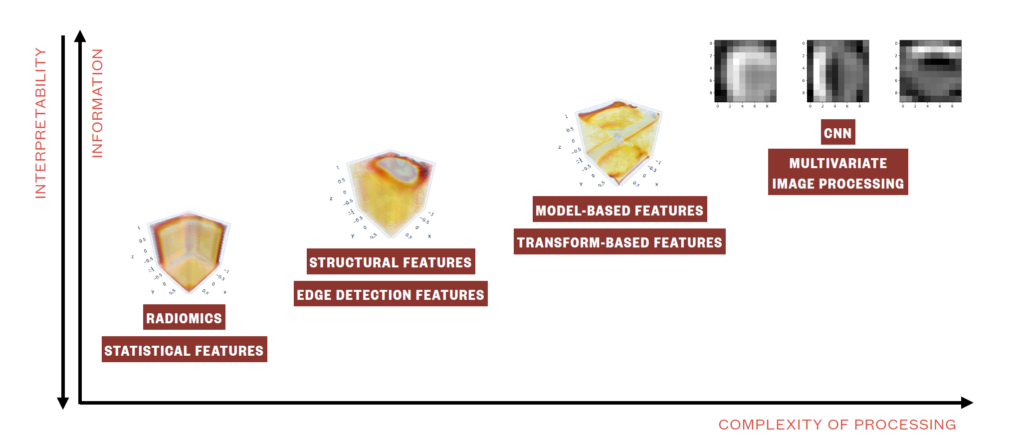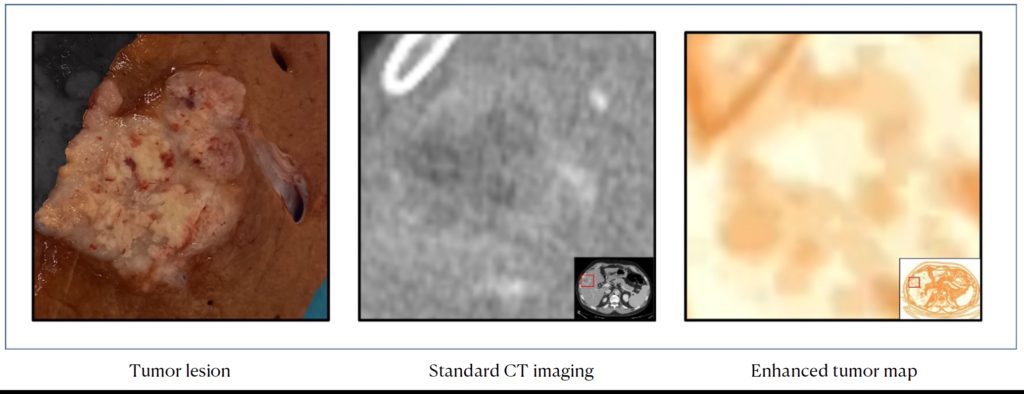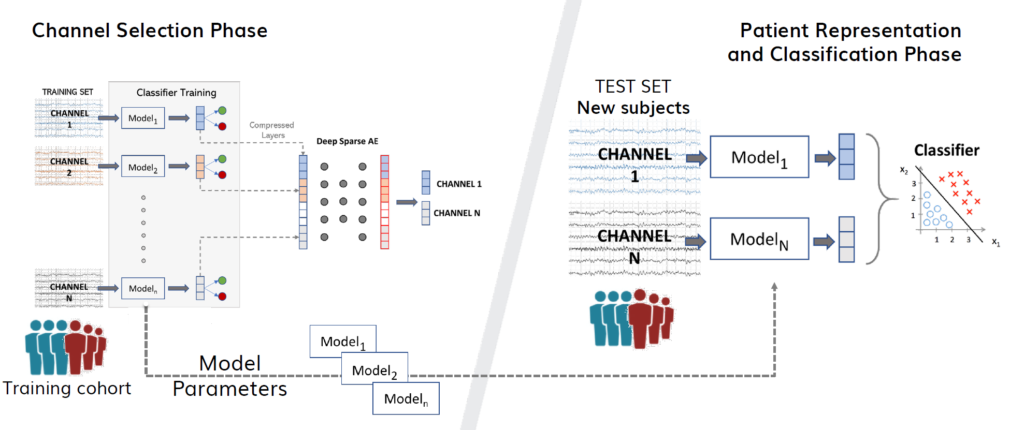The number and complexity of impacting questions in clinical and healthcare environment gives rise to an unprecedented call to arms in which engineering, analysis and physics are requested to take part along with medical expertise for impacting clinical practice and its diagnostic, predictive and therapeutic purposes. In fact, current clinical practice would benefit from intelligent support systems to properly exploit the consistent amount of data that are generated on a daily basis, particularly on those tasks that can be further improved and optimized – i.e., early diagnosis (in terms of accuracy and velocity), patients monitoring and personalization of the therapeutic pathways.
Specifically, biomedical signals are observations of physiological activities of organisms, ranging from gene and protein sequences, to neural and cardiac rhythms, to 2D and 3D body images (PET, CT, MRI). Once ingested, medical unstructured data need to be integrated and processed to build models for complete patient profiling, treatment planning and response prediction models.
Efforts in this direction are mainly devoted to investigating imaging analysis methods to address clinical research questions, including but not limited to statistical (i.e., radiomics), geometrical, structural, transform-based and multivariate image analysis as well as image embedding, image semantics and convolutional neural networks. Imaging analysis has evolved into a discipline and been shown to represent a fundamental source of information when performing diagnosis, modelling disease progression, and predicting disease free survival.

Images and Signals are not the only emerging challenge in the modern healthcare environment nowadays. In fact, the use of electronic health records (EHRs) has grown rapidly in the last decade, posing new challenges to the research in the field. EHRs are no longer being used only for storing information for clinical purposes but the secondary use of the data in the healthcare research has increased rapidly as well. The data in EHRs often contain large amount of unstructured free‐text. Text and data mining techniques, included Natural Language Process (NLP), are increasingly being used to effectively and efficiently process large EHRs for research purposes. For example, automated EHR data-mining may provide a valuable method to complement or even substitute current data collection methods, may effectively support the monitoring of real world population treated with multi-pharmacy or discontinuated therapies, may serve for evaluating the prescription appropriateness, as well as to better select cohorts for epidemiological enquiries. The use of automatically collected EHR data in trials, however, is still very limited, mainly due to the digitalization level in healthcare services and to the fact that most of the methods developed for this purpose deal with English‐language EHRs and cannot simply be applied to non‐English EHRs.
Our group tackle the methodological problems of performing analytics on complex unstructured data under different perspectives, both with supervised and unsupervised approaches, reaching insightful knowledge on the clinical and translational side. Accordingly, several novel methodologies have been and are being explored and developed, positioning on the cutting-edge of current literature.
Research projects/lines:
- ANTHEM – AdvaNced Technologies for HumancentrEd Medicine
ANTHEM is one of the 4 projects funded under the “Call for research initiatives for innovative technologies and pathways in the health and welfare field” pursuant to Directorial Decree no. 931 of 6 June 2022.
Goals: ANTHEM aims to implement multidisciplinary initiatives aimed at bridging, with the help of innovative technologies and pathways, the existing gap in the care of frail and chronic patients within specific target territories and communities characterized by high incidence and/or orphan diseases. The project, which envisages ministerial funding for 123.4 million euros, against a total investment of 125.2 millions, and the participation of 23 public and private partners is divided into four lines of intervention: technologies and data for diagnosis and treatment; smart environments and innovative sensors for proximity medicine; risk factors and tools for monitoring chronic patients; innovative therapeutic solutions for orphan pathologies.
Politecnico di Milano is responsible for one of the XXXX, related to research on environmental exposure to pollutants and tools development (wereable sensors) for monitoring chronic patients.
Partners: DEIB Polimi (Proff. Andrea Aliverti, Enrico Caiani), Humanitas Research Hospital, University of Salento, AB Medica)
- Humanitas – Lymphoma Project

Goals: The project aims to elucidate the yet unknown Hodgkin Lymphoma underpinnings and to develop criteria for therapy response prediction through tumor imaging assessment and intra-tumor heterogeneity quantification.
Clinical partners: Dr. Arturo Chiti, Dr. Martina Sollini, Dr. Carmelo Carlo-Stella (Humanitas University), Dr. Margarita Kirienko (Istituto Nazionale dei Tumori)
- Humanitas – ViBE Project

Goals: The project aims to build a liver virtual biopsy tool for cancer profiling. It consists of a processed and navigable 3D map of the tumor as to make imaging data easy to interpret for clinicians by visual inspection, disclose any intra-tumoral heterogeneity, that can be further quantitively characterized, and elucidate the association between heterogeneity and pathology and survival data, towards a full clinical translation or radiomics.
Clinical partners: Luca Viganò, Guido Costa, Francesco Fiz (Humanitas University)
- Pisa – Prostate Project

Goals: The project aims to provide a patient representation of multi-lesion disease, modelling information in an insightful, agnostic and easy to visualize way as to quantify tumor heterogeneity and predict tumor progression and treatment response in prostate cancer patients.
Clinical partners: Dr. Paola Anna Erba, Dr. Roberta Zanca (University of Pisa)
- Regione Lombardia – Monitoraggio e ottimizzazione dei tempi di attesa per procedure oncologiche

Goals: The project aims to extract valuable information from the free textual fields of electronic prescriptions, which can contain useful indications, especially for follow-up visits and exams, to monitor their waiting times and the appropriateness of their prescriptions.
Institutional partners: Regione Lombardia – Healthcare division (Dr. Francesco Bortolan, Dott.ssa Olivia Leoni)
- Fondazione Monasterio – NLP pipelines definition for extraction of structured information from EHRs

Goals: The project aims to extract structured information about risk factors, past events, diagnoses and any valuable information from the digitalized EHRs of the Fondazione Monasterio Hospital. Such information is then integrated with the one deriving from anamnestic evaluation, imaging corpus and clinical annotations, in order to feed a dynamic risk scoring algorithm for patients’ stratification.
Clinical partners: Dott. Claudio Passino, Dr. Michele Emdin (Fondazione Monasterio)
- Statistical modeling of neurodegenerative pathologies
 In the last twenty years functional Magnetic Resonance Imaging (fMRI) has become a well established method for the detection and delineation of cerebral activity and to study how various portions of the brain connect and cooperate to the completion of tasks. The idea of brain connectivity designates the strength of interactions from the functional and anatomical points of view. These aspects have been observed to be strongly intertwined, and strongly influenced by aging and by psychiatric and neurological diseases. Although these studies are highly relevant, the literature in the neuroscientific and clinical fields still lacks a comprehensive approach to evaluate how these aspects interact. In fact the dimensionality of the problem and the complexity of the geometry involved represent major technical challenges.
In the last twenty years functional Magnetic Resonance Imaging (fMRI) has become a well established method for the detection and delineation of cerebral activity and to study how various portions of the brain connect and cooperate to the completion of tasks. The idea of brain connectivity designates the strength of interactions from the functional and anatomical points of view. These aspects have been observed to be strongly intertwined, and strongly influenced by aging and by psychiatric and neurological diseases. Although these studies are highly relevant, the literature in the neuroscientific and clinical fields still lacks a comprehensive approach to evaluate how these aspects interact. In fact the dimensionality of the problem and the complexity of the geometry involved represent major technical challenges.
Goals: to apply methods specifically developed to analyze data observed over geometrically complex domains to neuroimaging data, to evaluate the impact of neurodegenerative pathologies on the brain and on the relationship between functional and anatomical connectivity.
Institutional Partners: Dr. Ferruccio Panzica, Fondazione IRCCS Istituto Neurologico “C. Besta”.
- Embedding and Cross-Subject Channel Selection Algorithm for Trial Classification

Goals: EEG Channel Selection is the process of identifying the most relevant electrodes to record EEG signals useful to discriminate specific brain activities. Most EEG systems are multi-channel in nature, but multiple channels might include noisy and redundant information and increase computational times of automated EEG decoding algorithms. To reduce the signal-to-noise ratio, improve accuracy and reduce computational time, one may combine channel selection with feature extraction and dimensionality reduction. However, as EEG signals present high inter-subject variability, we introduce a novel algorithm for subject-independent channel selection through representation learning of EEG recordings.
The algorithm exploits channel-specific 1D-CNNs as supervised feature extractors to maximize class separability and reduces a high dimensional multi-channel signal into a unique 1-Dimensional representation from which it selects the most relevant channels for classification. The algorithm can be transferred to new signals from new subjects and obtain novel highly informative trial vectors of controlled dimensionality to be fed to any kind of classifier.
- PROMETEO project

Goals: Anticipating diagnostic time, reducing infarction complications and optimizing the number of hospital admissions are three main goals of this project. Thanks to the partnerships of Azienda Regionale Emergenza Urgenza (AREU) and Abbott Vascular, ECG machinery with GSM transmission have been installed on all Basic Rescue Units of Milan urban area. PROMETEO project, planned and realized by 118 Dispatch Center of Milan since the end of 2008, made possible to send quickly the ECG from territory to 118 Dispatch Center itself, and then to the hospital where patient would have been admitted to, even when a Basic Rescue Unit (Unit managed by volunteers only, without physicians on board) is sent to the patient.
Clinical partners: AREU 118, Dr. Niccolò Grieco, Dr. Giovanni Sesana (Niguarda Ca’ Granda Hospital)
People involved:
- Prof. Francesca Ieva
- Prof. Laura Sangalli
- Dr. Lara Cavinato
- Dr. Letizia Clementi
- Dr. Michela Massi
- Dr. Alessandra Ragni
- Dr. Vittorio Torri






 In the last twenty years functional Magnetic Resonance Imaging (fMRI) has become a well established method for the detection and delineation of cerebral activity and to study how various portions of the brain connect and cooperate to the completion of tasks. The idea of brain connectivity designates the strength of interactions from the functional and anatomical points of view. These aspects have been observed to be strongly intertwined, and strongly influenced by aging and by psychiatric and neurological diseases. Although these studies are highly relevant, the literature in the neuroscientific and clinical fields still lacks a comprehensive approach to evaluate how these aspects interact. In fact the dimensionality of the problem and the complexity of the geometry involved represent major technical challenges.
In the last twenty years functional Magnetic Resonance Imaging (fMRI) has become a well established method for the detection and delineation of cerebral activity and to study how various portions of the brain connect and cooperate to the completion of tasks. The idea of brain connectivity designates the strength of interactions from the functional and anatomical points of view. These aspects have been observed to be strongly intertwined, and strongly influenced by aging and by psychiatric and neurological diseases. Although these studies are highly relevant, the literature in the neuroscientific and clinical fields still lacks a comprehensive approach to evaluate how these aspects interact. In fact the dimensionality of the problem and the complexity of the geometry involved represent major technical challenges.
